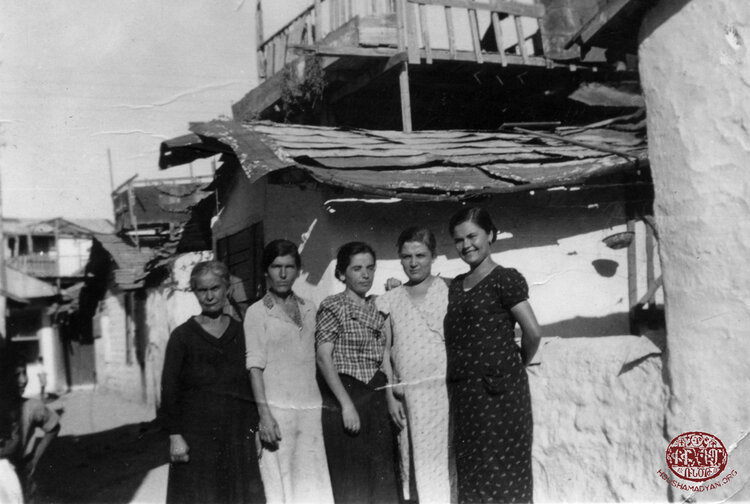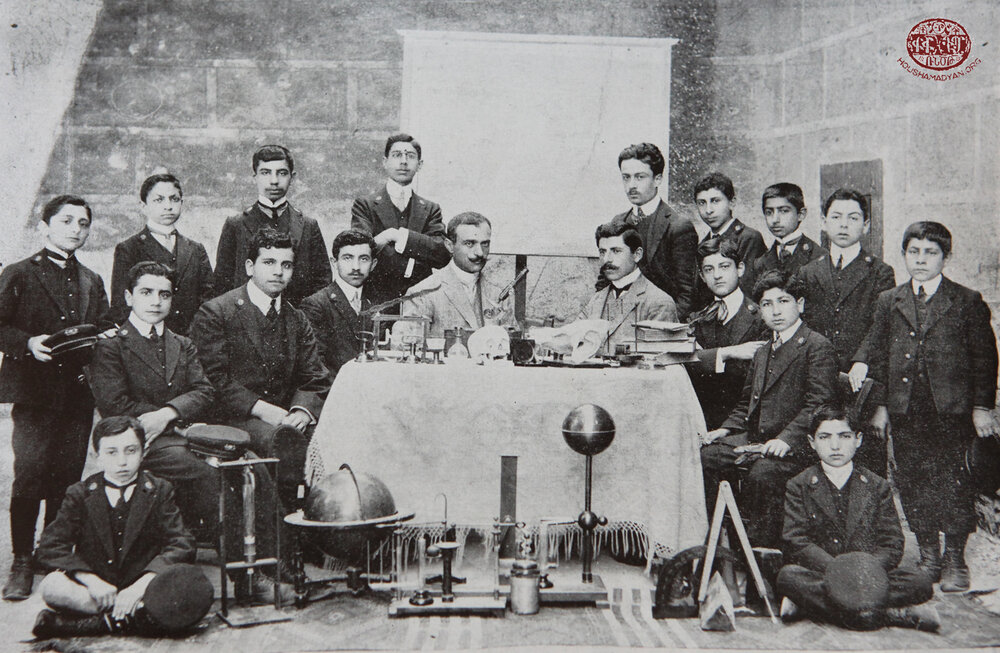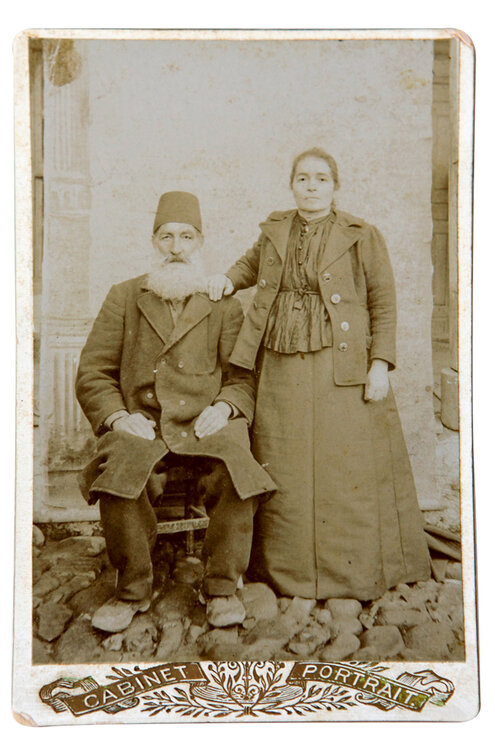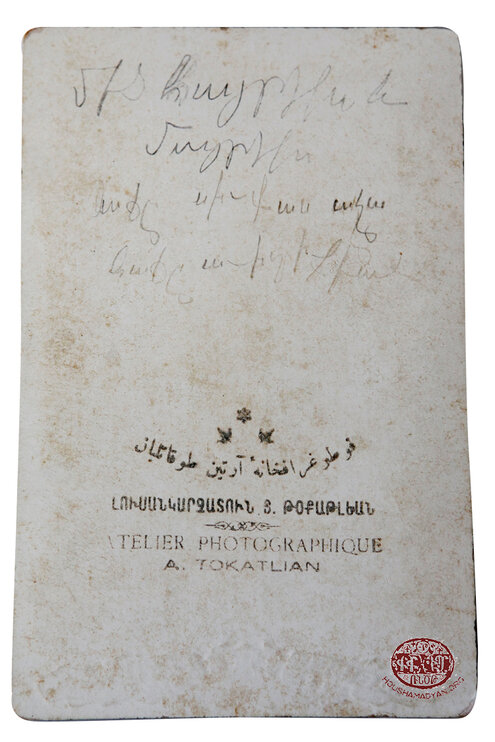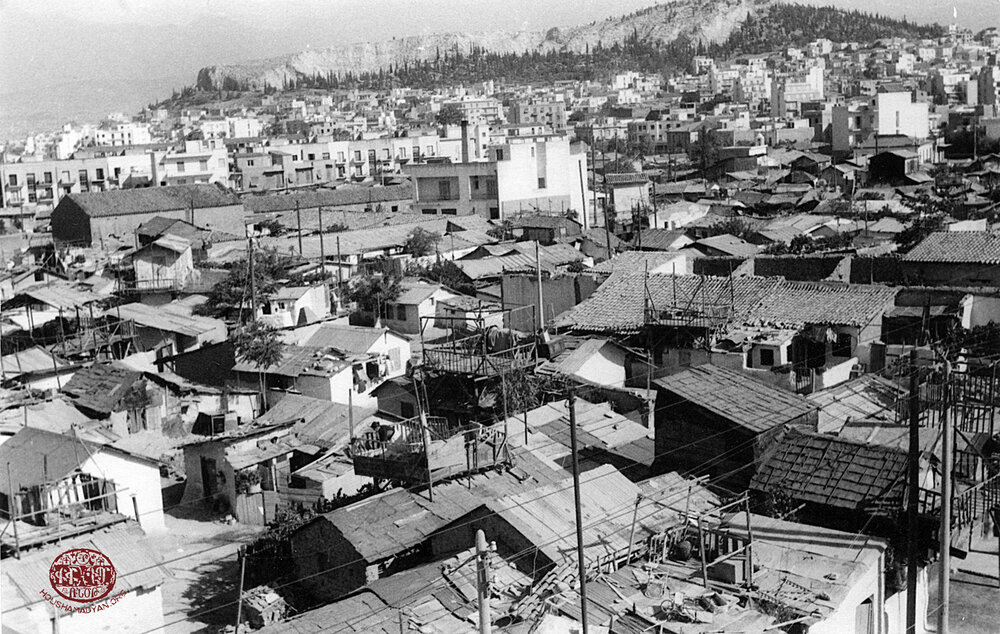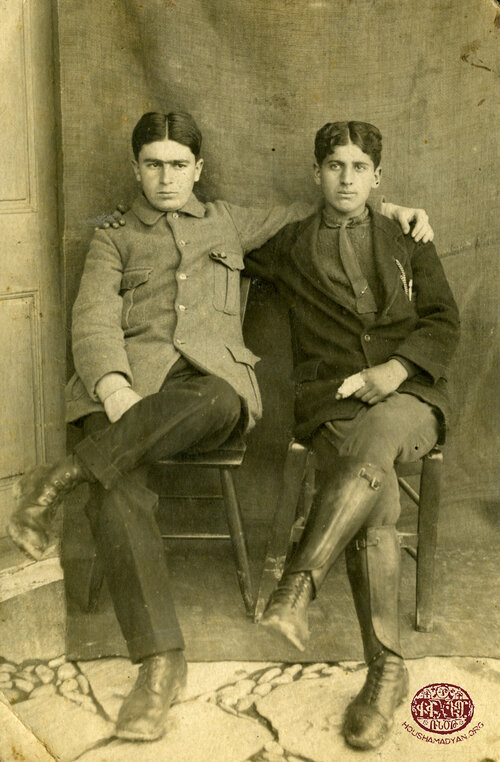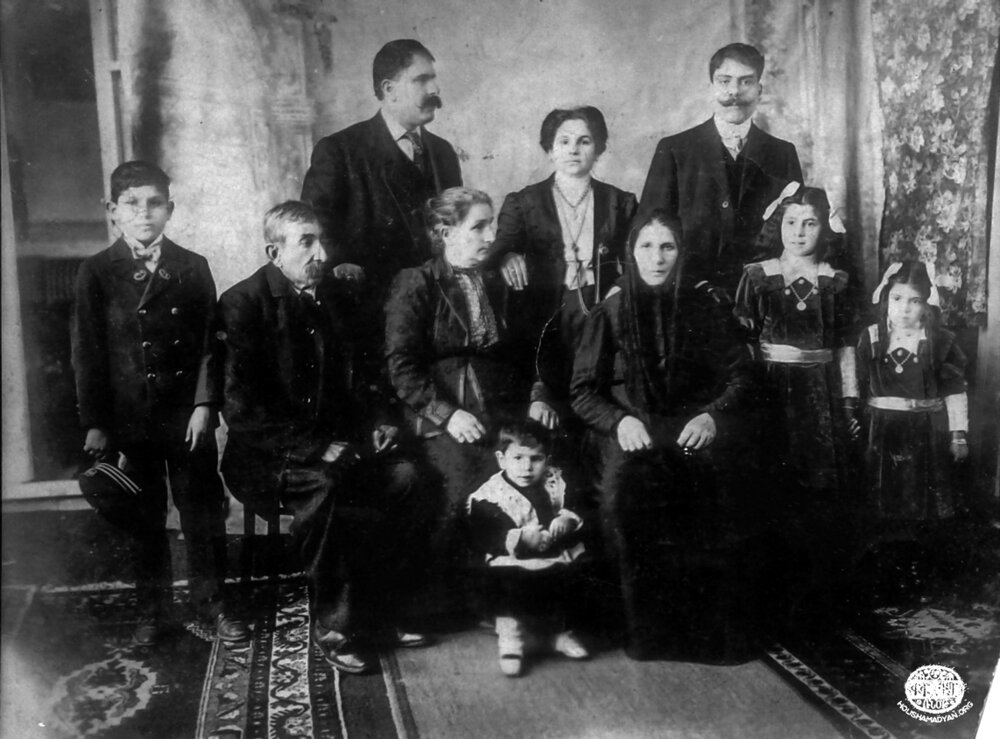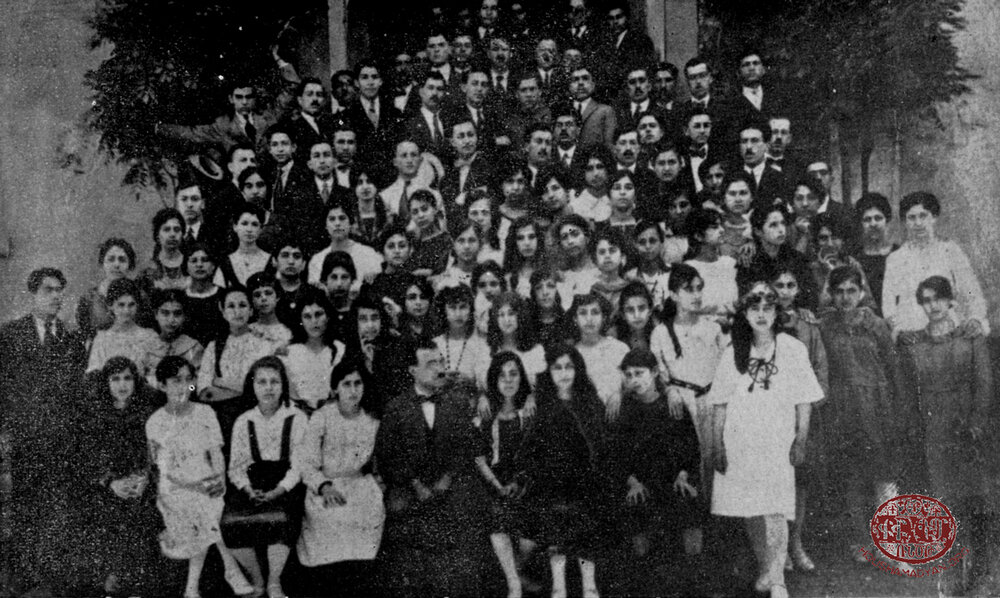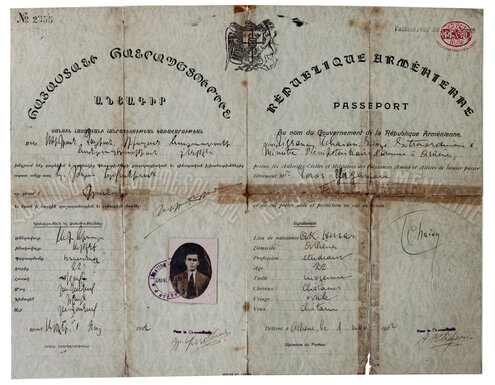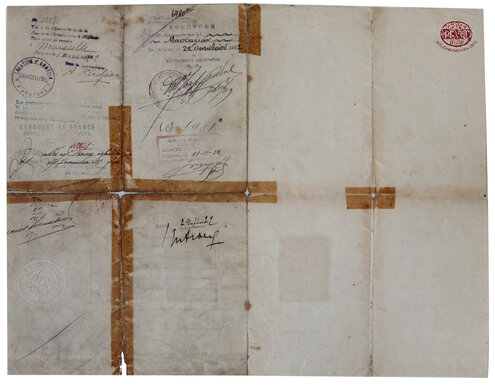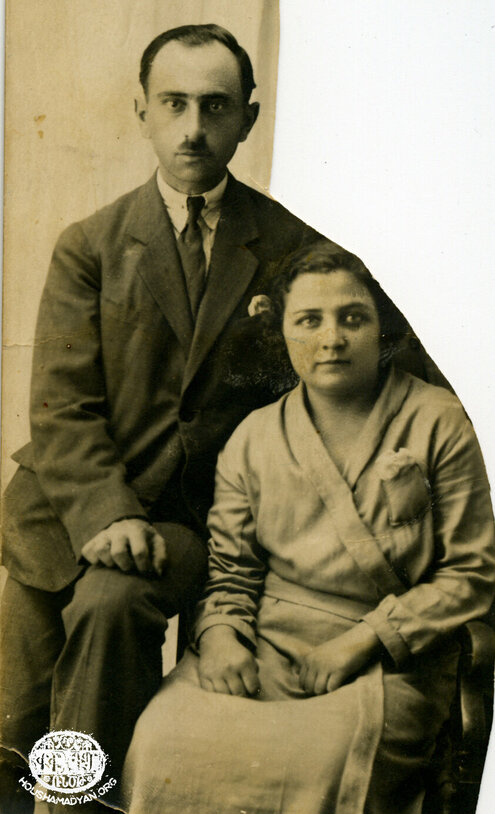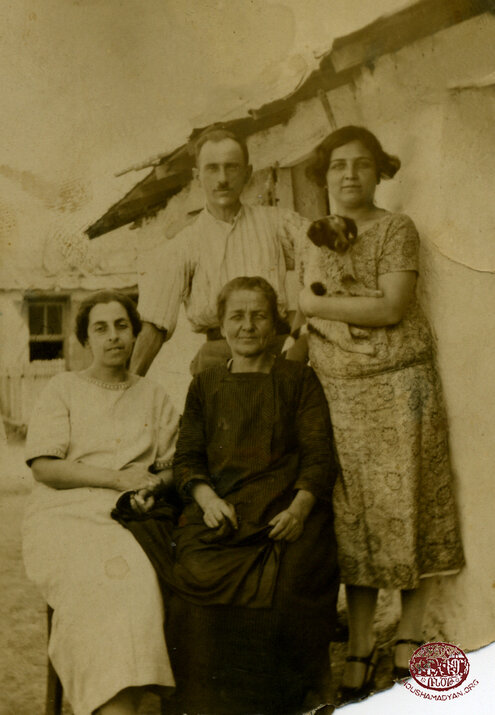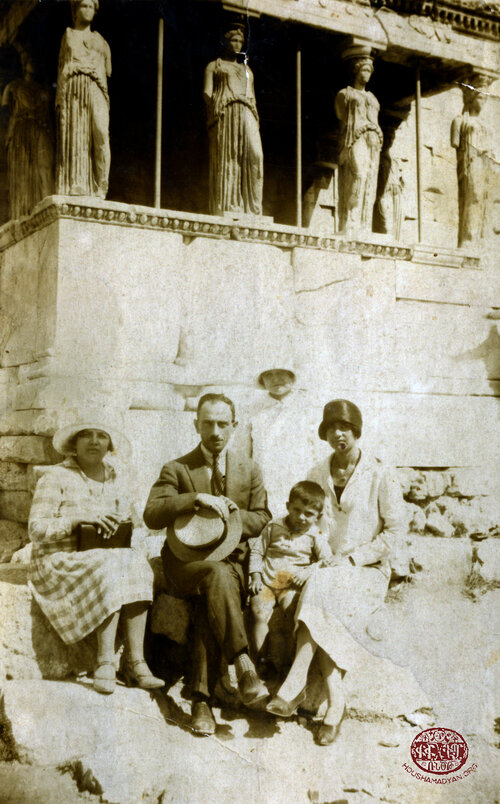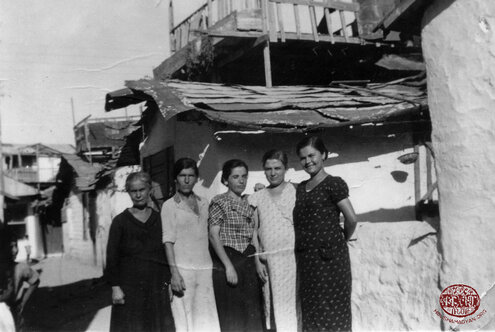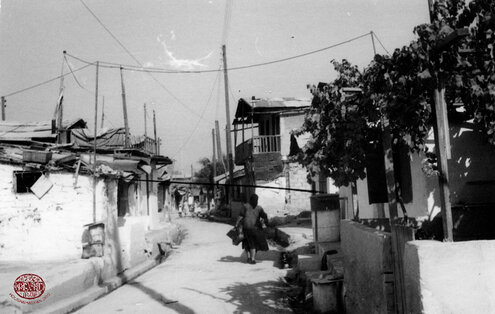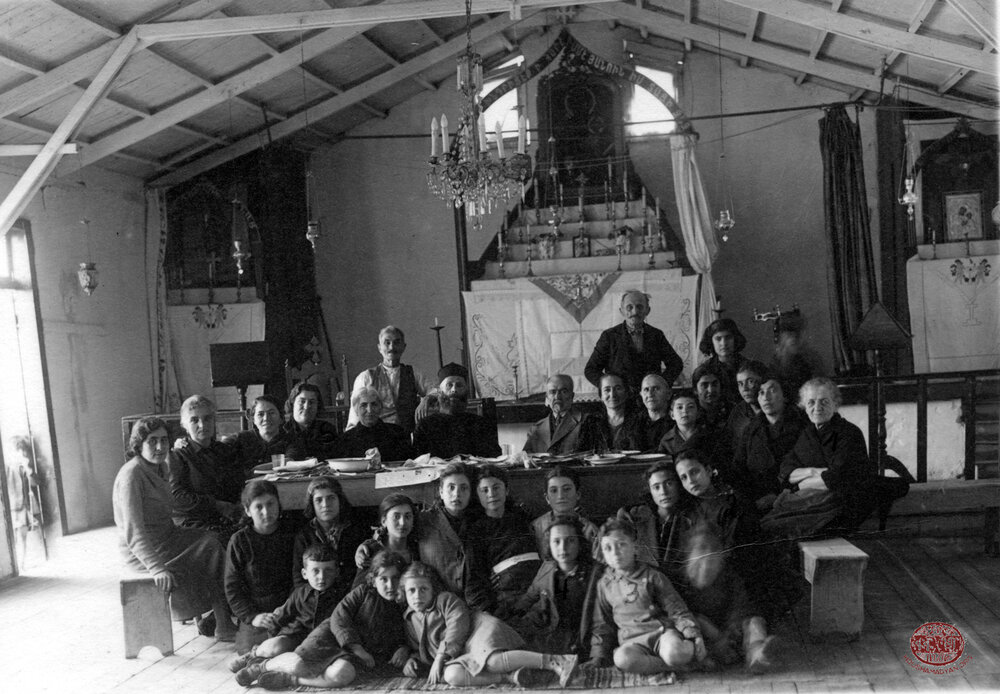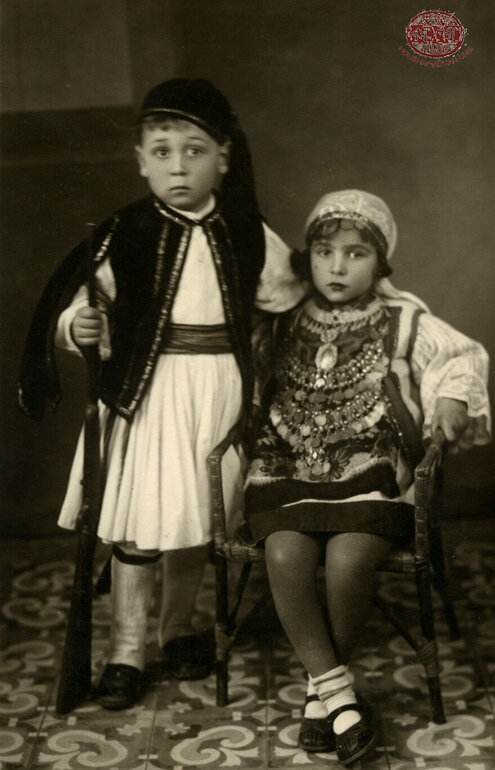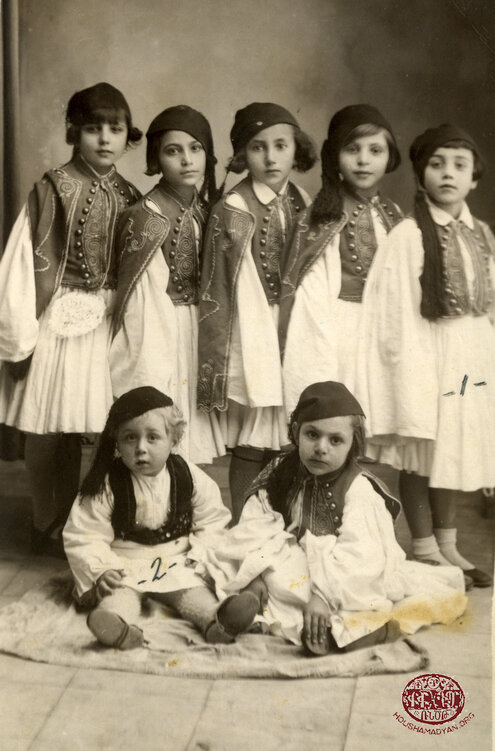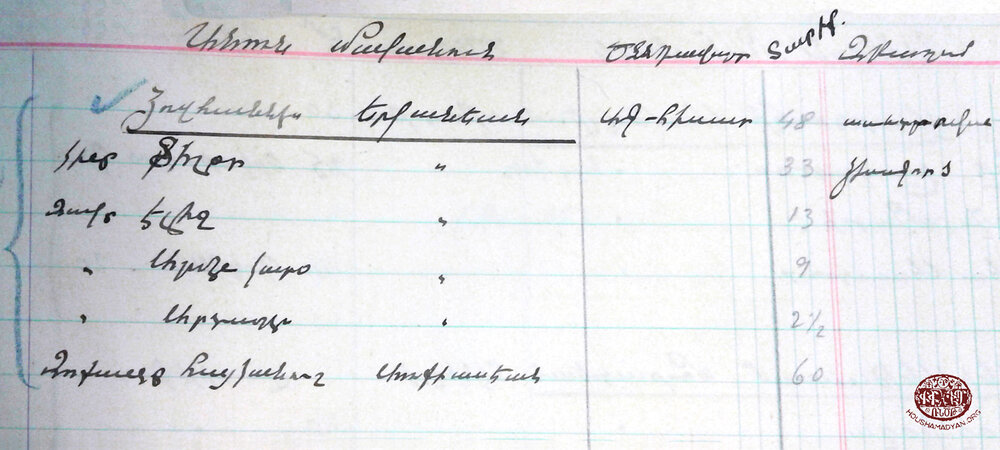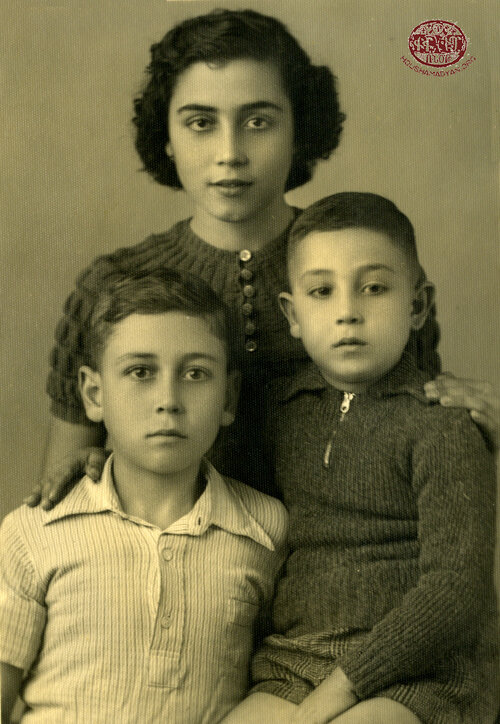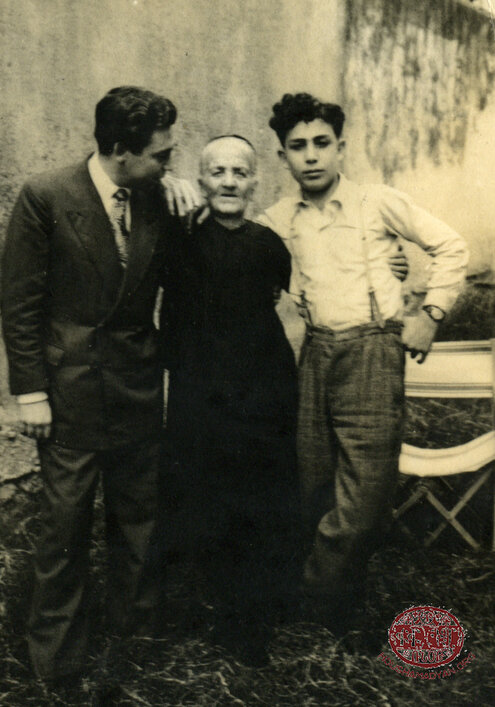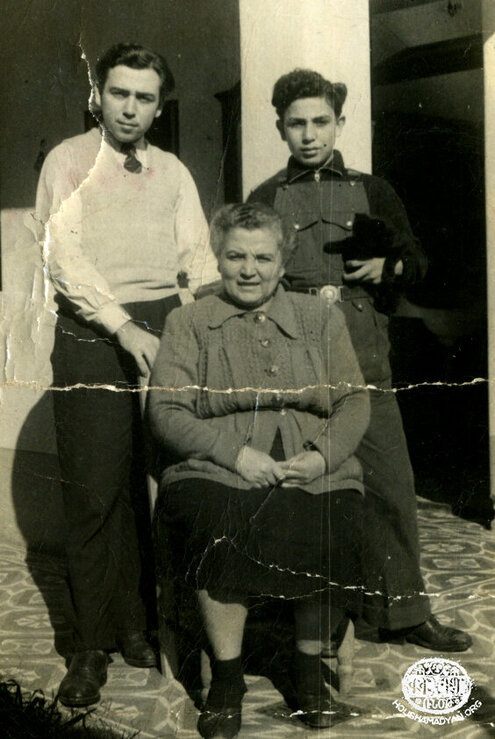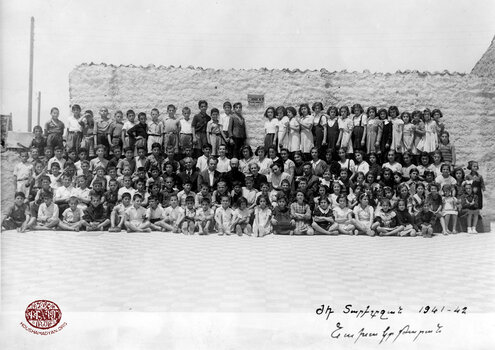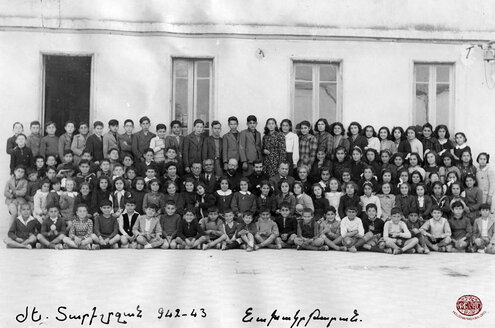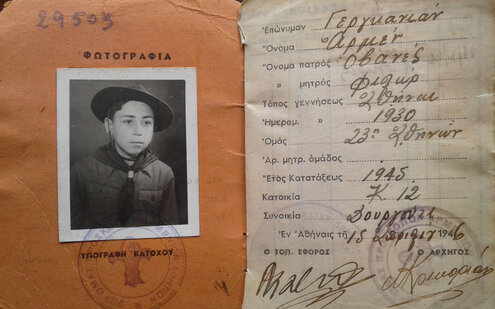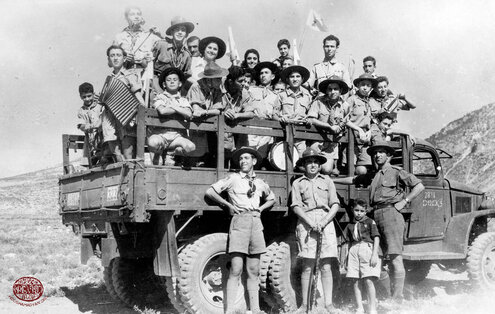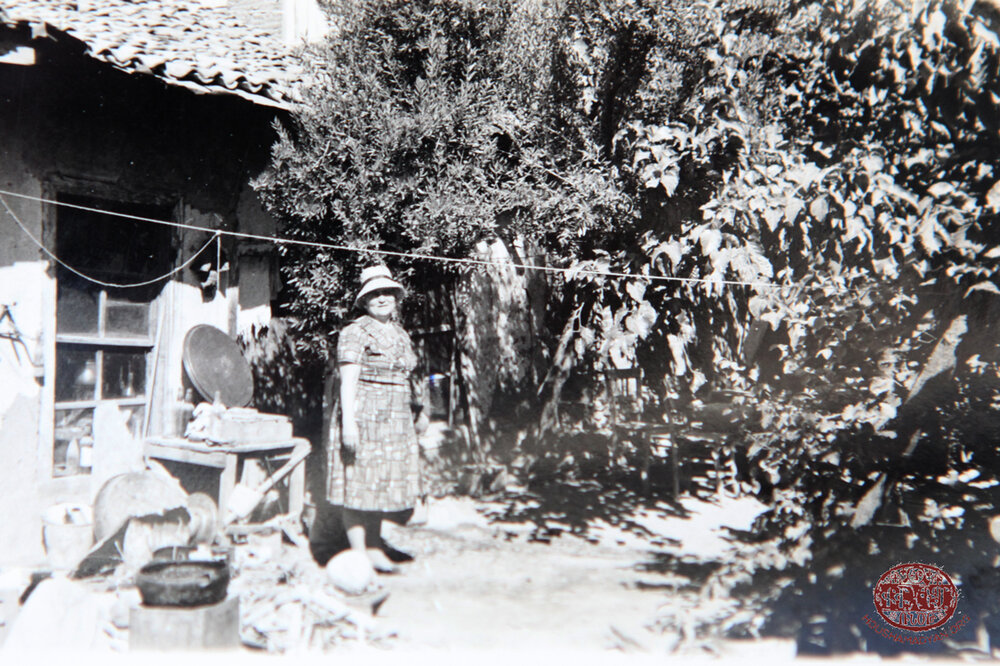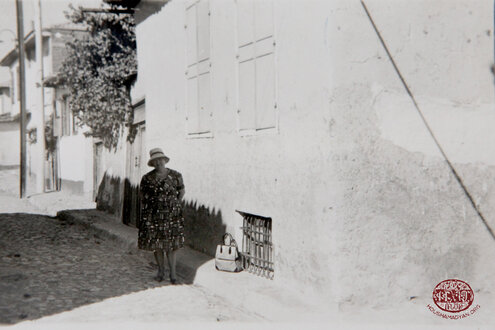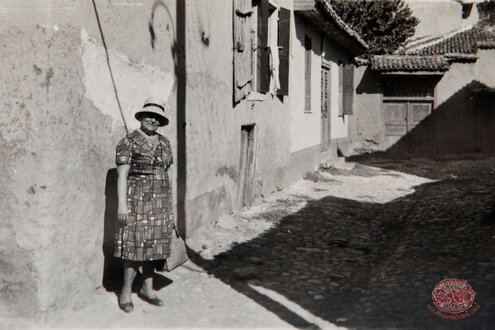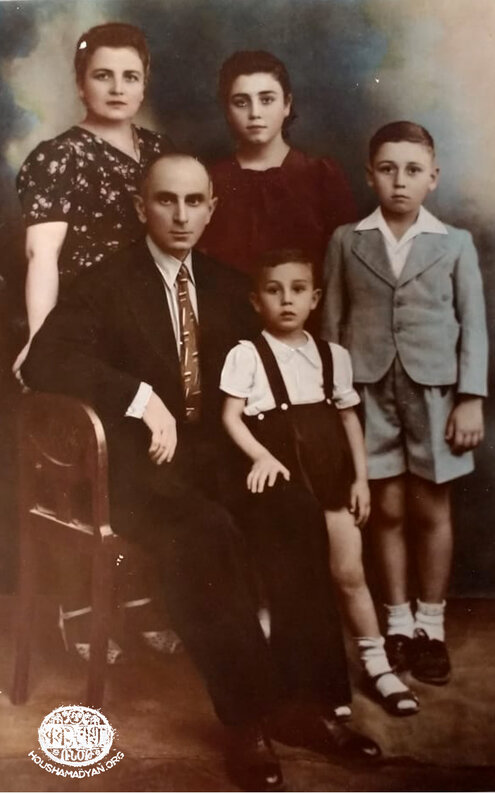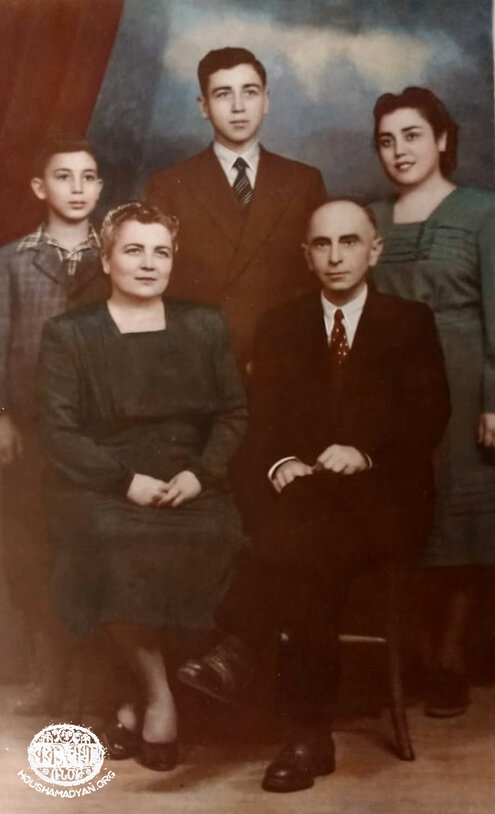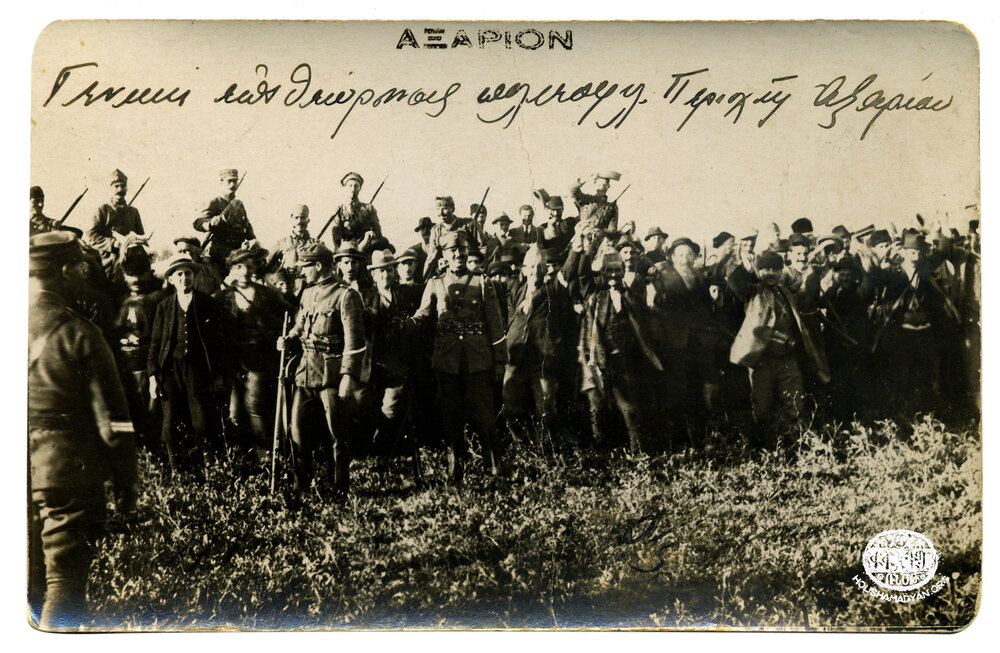Ricardo Yerganian collection - Athens
27.04.2020 - Translator: Simon Beugekian
These artifacts of memory were collected during the Houshamadyan workshop held in Athens on November 30, 2019. This page was produced in collaboration with the Athens periodical Armenika and the Hamazkayin Union.

This page is dedicated to the history of the Yerganian family, who were natives of Akhisar (80 kilometers north-east of Izmir/Smyrna). The family’s history, as well as the photographs presented here, were provided to us by Ricardo Yerganian. He learned his family’s history from his elders, among them his uncle Ardashes Yerganian (currently living in Buenos Aires). Another source of the family’s history were the articles published in various Armenian newspapers by Ricardo’s great uncle, Levon Yerganian.
Ricardo is the son of Armen Garo Yerganian, whose father, Hovhannes Yerganian (1892-1972), was born in Akhisar. According to the figures of the census conducted before the outbreak of the First World War, the city had a population of about 22,000, of whom 11,000 were Turkish, 10,000 Greek Orthodox, 800-900 Armenian (including approximately 20 Posha Armenians (Armenian gypsies)), and 150 Jewish.
Hovhannes Yerganian received his early education at his hometown’s Avedikian School. Later, he left to attend the K. Eolmezian (Anmahouni) Armenian-American boarding school in Manisa/Maghnisa. Hovhannes’s father, Takvor, had been one of the school’s founders, alongside other Armenian advocates of education. He left Manisa and traveled to Izmir/Smyrna, where he continued his education at the Mesrobian Secondary School. After graduating, he entered the city’s Ottoman Mektebe Soultanie School, but was forced to abandon his studies when the First World War broke out.

In late 1915, he was fortunate to be in Midilli (Mitilini, or the island of Lesbos), which saved him from the horrors of the Genocide. During the war years, he moved to Salonica, where he lived until the Armistice, after which he returned to his hometown, Akhisar.
In the post-war years, after 1919, the territory including Akhisar was occupied by the Greek army. At the time, Hovhannes has just betrothed his compatriot Filor Soukiasian (born in 1905), a graduate of Smyrna’s Hripsimyants School. A short time later, the Greek forces in the area began retreating in the face of Turkish advances. Hovhannes, Filor, Filor’s sister Gula, her mother Hayganoush and her father Nerses, left on the last train out of Akhisar and found refuge in Smyrna. Hovhannes was able to get Filor and her relatives onto a ship leaving Smyrna for an unknown destination, while he and his younger brother, Avedis, jumped into the sea and tried to board an American ship docked in the port. However, they were refused a place on the ship and were forced to return to shore. Eventually, like thousands of Greek and Armenian men, they were captured by the Turkish forces who occupied Smyrna. Hovhannes, as a prisoner, was exiled to Ayntab and Kilis, where he was pressed into work in road construction crews.

Hovhannes’s good knowledge of Turkish would play a fateful role in the years of his captivity. He was able to start working as a clerk for a Turkish officer, and was recompensed with food and tobacco, some of which he distributed to his fellow Armenian and Greek prisoners, thus gradually improving his and his friends’ living conditions. Finally, thanks to the intervention of the Red Cross, many of these men were released. In 1923, Hovhannes made it to Athens. The first thing he did was visit the city’s Armenian church. The church’s records indicated that Filor and her relatives were in the city. He immediately rejoined them. They settled down in the refugee camp of the Dourgouti (Fix) neighborhood. He married Filor, and they had three children – Eliz, Armen Garo, and Ardashes (usually called Ardash by members of his family).
After the Second World War and the terrible years of Nazi occupation, the family left for Buenos Aires (Argentina) in 1949, where Hovhannes died in 1972.
In September of 1962, exactly 40 years after being exiled from it, Filor Yerganian (nee Soukiasian) traveled alone from Argentina to Turkey, and visited her birthplace, Akhisar. She found the homes of the Yerganians and Soukiasians, and was photographed in front of them. These photographs are included on this page.

Hovhannes Yerganian’s father was called Takvor. He was born in Manisa/Maghnisa (between Izmir and Akhisar). His mother’s name was Eliz, and she was born in Akhisar. Eliz’s father was called Keatib Hovhannes. He, too, was a native of Akhisar. Takvor and Eliz had seven children in Akhisar: Aghavni, Armenag, Hovhannes, Dikran, Levon, Toros, and Avedis. The family’s comfortable financial position allowed most of the children to attend the Akhisar elementary school until 1914, after which they attended secondary schools in Manisa, Smyrna, and Constantinople.
In Akhisar, Takvor was engaged in the production and trade of raisins. The Yerganians had vast vineyards in the city, where they grew Akhisar’s famous seedless grapes, which were used to make raisins. Later, Takvor was appointed as the local manager of the government’s official tobacco company (Régie de Tabacs). The company’s headquarters was located in a building specifically built for it. The same company would later dispatch him to Denizli.

During the Armenian Genocide, in 1916, Takvor’s daughter, Aghavni, who was married and had three children, was deported with her family. Her mother Eliz and brother Toros were deported alongside her. At the time, Toros was a 14-year-old teenager, and he witnessed his family members dragged away by the waters of the Euphrates, never to be found again. Toros himself survived these events, and eventually reached Smyrna, then moved to Athens in 1922. He then traveled to Paris, using a passport granted to him by the embassy of the Republic of Armenia in Athens.
Takvor was deported separately from Denizli. He, too, was killed. Levon, too, was deported in 1916. He reached Darson/Tarsus, where he lived as a fugitive until the Armistice. He then returned to Akhisar. In 1920, he settled down in Paris, where he completed his studies in law, which had been interrupted in Salonika and Constantinople. While in Paris, he worked for decades for the local Armenian newspaper, Harach, and also contributed to Cairo's Housaper Armenian newspaper. On many occasions, he published articles that featured his memories of his family and of life in Akhisar, as well as the fate of the Armenian population of Smyrna. He died in 1971, in Paris. His younger brother, Avedis, also survived the Genocide and reached Athens, but died in the 1920s. Armenag and Dikran were killed in Smyrna when the Kemalist forces entered the city in 1922.
The descendants of Hovhannes and Filor Yerganian currently live in Buenos Aires, Argentina. In 1991, Ricardo and his family moved to Athens.


1. Hovhannes Yerganian and Filor Soukiasian, in 1923, Athens. On the back of the photograph, Hovhanne wrote: “A memory of black days, upon my return from captivity. For my brothers Levon and Toros, Paris.”
2. 1924, Fix neighborhood of Athens. The Yerganian family photographed outside their home. Standing, left to right – Hovhannes Yerganian and Filor Yerganian (nee Soukiasian). Seated, left to right – a female neighbor (name unknown) and Hayganoush Soukiasian.
1. In the Dourgouti (Fix) neighborhood of Athens. Thousands of Armenian refugees lived here. The homes are still mere huts built of corrugated metal. The back of the photograph reads “Fix. Outside our house.” Second from the right is Filor Yerganian (nee Soukiasian). The others are listed as Eleni, Zmroukhd, Sofia, and Katina.
2. The Dourgoúti (Fix) neighborhood of Athens, in the 1920s or 1930s.

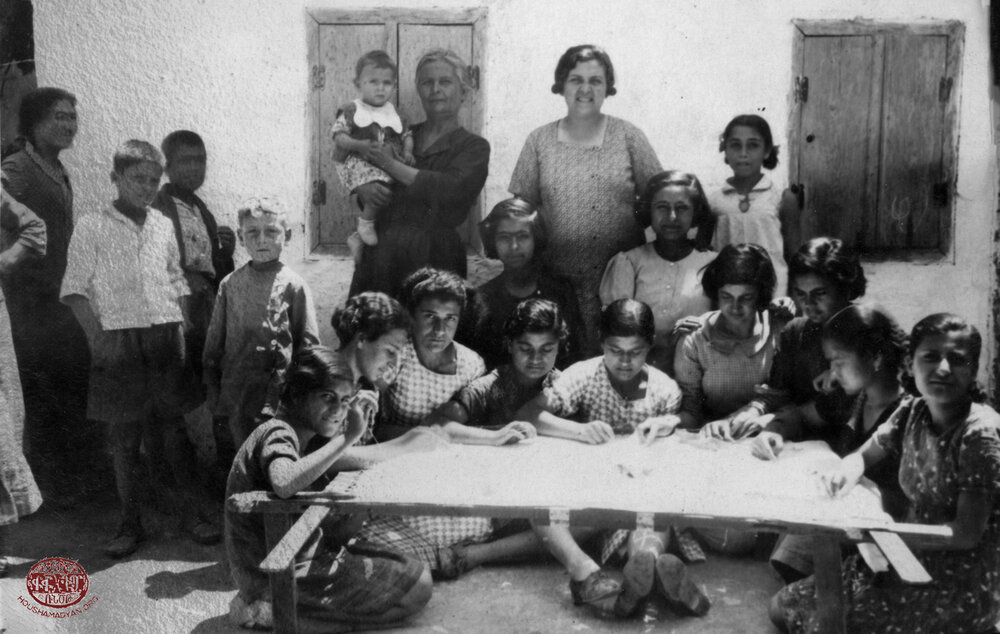

1. In 1949, the members of the Yerganian family reached Argentina in two groups. First to arrive were Filor and her two sons, Armen Garo and Ardashes. Six months later they were joined by Hovhannes, their daughter Eliz, and Filor’s mother Hayganoush. This photograph was taken in 1949, on the day the second group reached Buenos Aires. It features Armen Garo (on the left), Hayganoush (in the center), and Ardashes (on the right).
2. Buenos Aires, 1949. Left to right – Armen Garo, Filor, and Ardashes.
1. Athens, the students and faculty of the Dourgouti (Fix) neighborhood’s Armenian Catholic School’s elementary classes, 1941-1942 school year. Last row, standing, fifth from the left, is Armen Garo Yerganian. Among the teachers is Kevork Garvarents, wearing a white shirt, no tie, and a dark coat. Immediately to his right is a bald-headed cleric, who was the school’s principal, Father Hovhannes Gamsaragan.
2. Athens, the students and faculty of the Dourgouti (Fix) neighborhood’s Armenian Catholic School’s elementary classes, 1942-1943 school year.

1. September 20, 1962, Akhisar. Filor Yerganian (nee Soukiasian), visiting Turkey and her hometown, on a trip from Argentina. Here, she is photographed outside of the Soukiasian family home.
2. Another photograph from Filor’s visit to Akhisar. Here, she is photographed on the road outside the Soukiasian family home.



